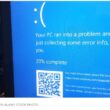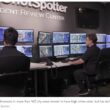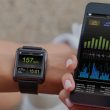Using cavity filters to mitigate RF interference
Last month, we discussed various types of RF-resonant cavities. This month the discussion focuses on the actual use of these cavities to mitigate RF interference. Due to RF congestion at popular transmitter sites, such as high points near a populated area, RF interference has become the norm rather than the exception. The types of interference include transmitter noise, receiver desensitization and intermodulation interference.
Transmitter noise is the broadband noise that is radiated along with the desired signal from a transmitter. The amplitude of this noise decreases with frequency away from the carrier frequency. Much of this noise is generated in the exciter stage of the transmitter and amplified by each succeeding stage all the way to the antenna output port. All transmitters are not created equal — some transmitters generate more broadband noise than others. The specifications of the RF filter required to mitigate the noise from a particular transmitter will depend, in part, on the transmitter model — all other factors being equal.
Transmitter noise graphs, as supplied by the equipment manufacturer, usually show the level of transmitter noise referenced to the carrier level. Because the noise is on the receiver’s frequency, transmitter noise can’t be mitigated at the receiver — it must be done at the transmitter. The total amount of isolation required to suppress the transmitter noise to a non-interfering level depends on the transmitter power, sideband noise level and receiver sensitivity.
For example, suppose the transmitter power is 100 W (50 dBm), the operating frequency is 160 MHz, the receiver sensitivity is 0.25 µV (-119 dBm) and the receiver frequency 159 MHz. At a frequency 1 MHz away from the carrier, the sideband noise is 100 dB below the carrier level (or 50 dBm minus 100 dB equals -50 dBm). To avoid interference, the noise should be suppressed to a level that is 10 dB below the receiver’s sensitivity figure (or -119 dBm minus 10 dB equals -129 dBm). So, the noise level must be attenuated by 79 dB (-50 dBm minus -129 dBm).
The first step is to determine the path loss between the two antennas. If the antennas are in line-of-sight, free space path loss can be calculated or obtained from a chart or graph. Suppose that the antennas are 0.25 miles apart. The free space path loss would be approximately 68 dB, assuming isotropic radiators for the transmitter and receiver antennas. But in this case both receiver and transmitter antennas have a gain of 6 dBd, or 6 dB referenced to a half-wave dipole, which has a gain of 2.15 dB over an isotropic radiator. Taking these antennas into account, the path loss is now 68 dB minus 16.3 dB — the sum of the antenna gains referenced to an isotropic radiator — or 51.7 dB. An isolation of 79 dB is needed to mitigate this interference, but the path loss provides only 51.7 dB, leaving an excess of approximately 27 dB. This extra 27 dB of isolation can be handled with a filter.
The filter must be installed at the output of the transmitter. The objective is to use a filter that introduces minimum insertion loss at the transmitter frequency and maximum rejection at the receiver frequency.
Figure 1 shows a series of graphs that depict the response of various bandpass cavity configurations. The sharpest selectivity is indicated by the green trace. This arrangement consists of three 5-inch cavities connected in cascade with the coupling loops set to 0.5 dB. This means that the total insertion loss at the desired pass frequency would be 1.5 dB. For a 100 W transmitter, this would represent a total loss of approximately 29 W, which is dissipated in the cavities. If this amount of loss is intolerable, larger cavities can be used (a more expensive option). Perhaps only two cavities with larger diameter (higher Q) might be required, with the coupling loops set to less insertion loss.
Figure 2 shows a response curve of a high-pass reject (notch) filter. The blue trace represents the response while the red trace represents the return loss. Notice that the return loss is maximum (in the negative direction) at the pass frequency and minimum at the reject frequency. The notch is located at 159 MHz and the pass at 160 MHz. The insertion loss at the pass frequency is approximately 0.5 dB and the attenuation at the notch frequency is approximately 28 dB.
The choice of which filter arrangement to use might come down to cost only. In that case, the notch filter probably would be the choice. On the other hand, the bandpass cavity arrangement would lower the noise across a broader bandwidth and thus possibly eliminate interference problems with other co-located receivers. The notch filter would provide relief only for this particular instance.
If one had to keep adding notch filters to mitigate a specific interference issue, the transmitter soon would have a string of notch filters with additive insertion losses, which would be very inefficient. Having two or even three high-Q bandpass cavities in cascade between the transmitter output and the antenna could prevent other possible interference issues from occurring. In the case of a simplex base station, the bandpass cavities also can provide receiver protection.
Interference issues such as transmitter noise and receiver desensitization are best handled in the planning stage. However, sometimes such issues slip through the cracks and surface only after the equipment is installed and operating for some time. If that is the case, a test procedure can be used to determine just how much isolation is required to mitigate the interference problem.
A test setup is shown in Figure 3. When the offending transmitter is off and the attenuator is set to 0 dB, the signal generator is adjusted to the receiver frequency and set to produce 12 dB SINAD at the output. This will require a high signal generator output to get through the isotee. When the offending transmitter is keyed, the SINAD reading will be degraded by the interference. The attenuator then is adjusted to return the SINAD reading to 12 dB or nearly so. The amount of attenuation required to return the SINAD reading to 12 dB is the amount of additional isolation need to mitigate the interference.
The SINAD reading degradation may be due to transmitter noise and receiver desensitization. Typically, transmitter noise requires more filtering (isolation) than does receiver desensitization. This means that as the attenuator setting is increased, the interference due to receiver desensitization is alleviated before the transmitter noise interference is alleviated. The filter must be installed at the receiver to mitigate receiver desensitization interference. The bandpass filter indicated by the green trace in Figure 1 can be used at the receiver. Of course, the center frequency would be on the receiver frequency and not the transmitter frequency. Tests on the receiver can be done using a signal generator that is spectrally pure to establish a benchmark for the receiver desensitization figure. A spectrum analyzer then can be used to determine the level of the offending transmitter at the receiver input. To avoid desensitization, the offending signal level must be kept well below the benchmark established by the following procedure.
A test setup is configured such that two signal generators are used — one for the desired signal and the other at the proper frequency offset to represent the undesired or interfering signal. These are fed through a combiner with proper isolation (between generators) to the receiver input. The signal generator representing the desired signal is set to produce 12 dB SINAD at the receiver output. Then, the signal generator representing the interfering signal (causing receiver desense) is adjusted to produce a degradation of 1 dB to SINAD meter reading at the receiver output. Again, it is imperative that the signal generators used in this test are spectrally clean. This eliminates the possible confusion of the noise versus desense aspect of the test.
Intermodulation interference is another common problem affecting land mobile radio communications. Intermodulation products are formed when two or more signals combine in a nonlinear mixer. (Nonlinear mixers can be found in all the wrong places!) One typical example of intermodulation interference is presented here.
Figure 4 shows a site where two transmitters and a receiver are co-located. The transmitter signal from TX-B enters the Class C output stage of TX-A, where it mixes with the second harmonic of the TX-A signal to produce the 2A-B intermodulation product. This happens to be on the frequency of RX-C, causing severe interference. Assigning some actual figures to the signal levels will allow us to determine how much and what kind of filtering is required to mitigate the interference.
The RF output from TX-A is 100 W. All antennas have a gain of 6 dBd. All transmission lines have a loss of 2 dB. The path loss between TX-B and TX-A is 60 dB. The path loss between TX-A and RX-C is 60 dB. The conversion loss in the RF output stage of TX-A is 20 dB. The sensitivity of RX-C is 0.3 µV, or -117 dBm. It is desirable to suppress the intermodulation signal (2A – B at the receiver input) to a level that is 10 dB below the receiver’s sensitivity, or -117 dBm minus 10 dB equals -127 dBm. With no filtering installed, the intermodulation level is equal to -74 dBm at the input to RX-C. (See calculations in Table 1.) This is 53 dB too high. Some type of filtering or other isolation must be provided to reduce the intermodulation signal by at least 53 dB.
By installing the filters (on TX-A) — represented by graph D (green trace) in Figure 1 — with the center frequency at 159 MHz, an additional loss or isolation of approximately 30 dB could be obtained. The B signal would be attenuated by approximately 15 dB and the intermodulation signal (C) also would be attenuated by approximately 15 dB, for a total reduction in the intermod signal of 30 dB.
This would still leave the intermodulation signal approximately 23 dB above the desired suppression level. An alternative would be to install an isolator at the output of TX-A. A dual isolator could give a 60 dB attenuation to the B signal before it entered the output stage of TX-A. This 60 dB reduction would be more than enough to suppress the intermodulation signal well below the -127 dBm level at the input to RX-C. The isolator should be followed by at least one bandpass cavity filter to suppress any second harmonics that might be generated in the isolator.
There almost always is more than one way to mitigate an interference problem. The choice depends on cost, attitudes of RF neighbors and site planning for the future. The attitudes of your RF neighbors can sometimes be less than desirable. Some aren’t willing to tolerate even 0.5 dB of insertion loss to their transmitter power even though a filter might improve the situation for many of the RF tenants on the site. Of all the criteria with which one must deal, these attitudes can be the most difficult to overcome. Education and diplomacy are the keys to getting it done.
Until next time — stay tuned!
| TX-B power output | +50 dBm |
| B line loss | -2 |
| B antenna gain | +6 |
| B to A path loss | -60 |
| A antenna gain | +6 |
| A line loss | -2 |
| A conversion loss | -20 |
| A line loss | -2 |
| A antenna gain | +6 |
| A to C path loss | -60 |
| C antenna gain | +6 |
| C line loss | -2 |
| Intermodulation level at input to RX-C | -74 dBm |

















